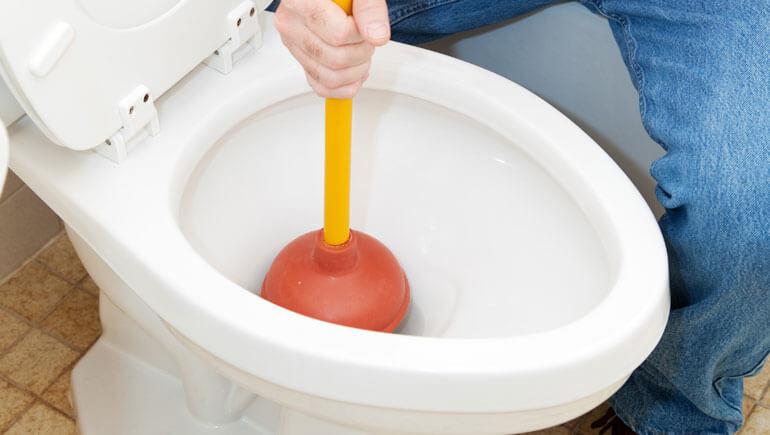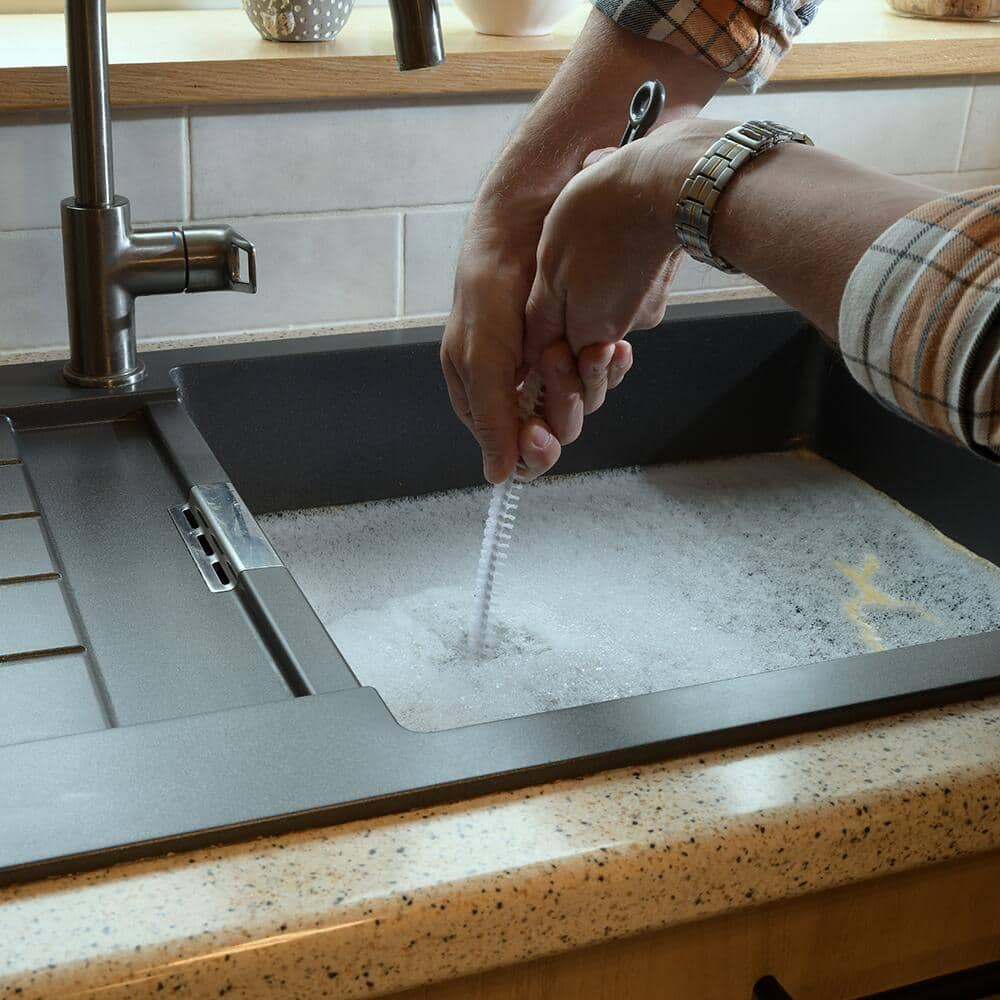Do you find yourself in search of information on How to Unclog Your Sink with a Plunger?

Introduction
Correct maintenance of household drains pipes is important for preventing blockages and ensuring smooth water circulation. One of the secret devices in every property owner's toolkit is the bettor, alongside different drainpipe cleansers designed to take on stubborn blockages properly. This article checks out just how to use plungers and drain cleaners efficiently to maintain your drains pipes streaming easily.
Section 1: Recognizing Plungers
Sorts of Plungers
There are numerous kinds of bettors readily available, each created for different sorts of drains and obstructs. The most common types include cup bettors, flange bettors, and accordion bettors.
Just How Plungers Job
Plungers deal with the principle of creating stress and suction to displace blockages. When appropriately applied over a drain, they develop a vacuum cleaner that can pull out particles or separate blockages.
Choosing the Right Bettor
Choosing the appropriate plunger depends upon the sort of drain and the nature of the blockage. Mug bettors are ideal for sinks and bathtubs, while flange plungers are much better fit for toilets as a result of their layout.
Common Mistakes with Bettors
Staying clear of these mistakes makes certain reliable plunging: inappropriate seal around the drainpipe, not enough pressure, and unclear bordering particles.
Section 2: Utilizing Plungers Efficiently
Preparation
Before diving, make certain the bettor covers the drain completely and creates a limited seal. Clear any type of noticeable particles around the drain opening.
Strategy
Begin with mild plunging activities to develop suction. Rise pressure slowly, making use of a constant rhythm. Repeat as required up until the drainpipe clears.
Fixing Tips
If diving does not function, try adjusting the seal, using petroleum jelly for a far better seal, or using a various type of bettor.
Area 3: Comprehending Drainpipe Cleaning Company
Kinds Of Drainpipe Cleaning Company
Drain cleaners can be chemical or chemical. Chemical cleansers use strong chemicals to dissolve blockages, while chemical cleansers make use of all-natural enzymes to break down organic matter.
How Drain Cleansers Work
Chemical cleaners react with blockages to dissolve them, while enzymatic cleaners break down organic materials like hair and grease without harming pipes.
Safety and security Considerations
Always use handwear covers and eye protection when utilizing chemical drainpipe cleansers. Ensure appropriate air flow and adhere to manufacturer instructions very carefully.
Eco-Friendly Alternatives
Think about making use of vinegar and baking soft drink or enzyme-based cleansers for eco-friendly choices that are much safer for pipes and the environment.
Area 4: Utilizing Drainpipe Cleansers Effectively
Application Methods
Put chemical cleaners straight into the drain opening. Permit them to work for the suggested time prior to flushing with hot water. Chemical cleansers should sit over night.
Preventative measures
Avoid mixing various sorts of cleansers, as this can produce harmful fumes. Never utilize chemical cleansers in conjunction with a plunger, as splashing can occur.
Dealing With Stubborn Clogs
For consistent clogs, consider using a plumbing serpent or calling a professional plumbing technician to stop damage to pipes.
Final thought
Finally, understanding exactly how to utilize bettors and drainpipe cleaners efficiently is crucial for maintaining healthy plumbing systems. By choosing the right tools and methods, house owners can take on small blockages and stop significant pipes problems down the line.
How To Properly Use A Plumbing Snake To Clear Drains
When any drain clogs in our home arise, we tend to gravitate toward the plunger and little else. In cases where the plunger and its vacuum-created pressure are not able to clear clogs, many immediately move to harmful chemicals or simply call their plumber to fix the issue.
we’re happy to help with all drain cleaning needs and concerns. This includes informing you on a few other home remedies you may have at your disposal for minor to moderate clogs, one of which is the use of a plumbing snake. Many people have never used one of these before – let’s go over the steps to take when your drain clogs and you have a plumbing snake available.
Attempt Plunger Use
The first step here, as we noted above, should indeed be to grab your plunger when you notice a drain clog and attempt to resolve it this way. If you’re unsure how to use a particular type of plunger, our plumbers can answer any questions you have. If this doesn’t do the trick, however, you move on to the snake.
Locate And Prepare Snake
A plumbing snake is a metal or plastic device that’s generally about a quarter of an inch thick. It’s design with significant extensions, meant to reach down into your clogged drain and push the clog out. Snakes also contain drain augers that will latch onto and push stubborn blockages.
If your plunger doesn’t clear a clog, locate your snake and bring it to the drain in question. We also recommend keeping a bucket nearby to collect the clog once you pull it out, plus we’d advise wearing goggles and possibly protective gloves.
Feed Snake
Once you’re ready to go, feed the snake slowly down the drain, using the crank device it comes with to keep it moving until it finds the clog. Once this happens, much of the clog will be latched onto the coil so you can pull it out, while the rest will simply break up and flow downward.
Detach Debris
Remove the snake slowly from the drain, and once you’ve done so, pick off any debris that’s stuck to the coil. This is another area where wearing gloves is a must.
Flush Drain
Finally, take a few minutes to ensure the snake has done its job correctly. If you’ve been using it on a toilet, flush the toilet a couple times and make sure everything flows well. If you’ve used it on a different drain, flush it with some room temperature water.
https://www.mybuddytheplumber.com/blog/how-to-properly-use-a-plumbing-snake-to-clear-drains/

Application Methods
Put chemical cleaners straight into the drain opening. Permit them to work for the suggested time prior to flushing with hot water. Chemical cleansers should sit over night.
Preventative measures
Avoid mixing various sorts of cleansers, as this can produce harmful fumes. Never utilize chemical cleansers in conjunction with a plunger, as splashing can occur.
Dealing With Stubborn Clogs
For consistent clogs, consider using a plumbing serpent or calling a professional plumbing technician to stop damage to pipes.
Final thought
Finally, understanding exactly how to utilize bettors and drainpipe cleaners efficiently is crucial for maintaining healthy plumbing systems. By choosing the right tools and methods, house owners can take on small blockages and stop significant pipes problems down the line.
How To Properly Use A Plumbing Snake To Clear Drains
When any drain clogs in our home arise, we tend to gravitate toward the plunger and little else. In cases where the plunger and its vacuum-created pressure are not able to clear clogs, many immediately move to harmful chemicals or simply call their plumber to fix the issue.
we’re happy to help with all drain cleaning needs and concerns. This includes informing you on a few other home remedies you may have at your disposal for minor to moderate clogs, one of which is the use of a plumbing snake. Many people have never used one of these before – let’s go over the steps to take when your drain clogs and you have a plumbing snake available.
Attempt Plunger Use
The first step here, as we noted above, should indeed be to grab your plunger when you notice a drain clog and attempt to resolve it this way. If you’re unsure how to use a particular type of plunger, our plumbers can answer any questions you have. If this doesn’t do the trick, however, you move on to the snake.
Locate And Prepare Snake
A plumbing snake is a metal or plastic device that’s generally about a quarter of an inch thick. It’s design with significant extensions, meant to reach down into your clogged drain and push the clog out. Snakes also contain drain augers that will latch onto and push stubborn blockages.
If your plunger doesn’t clear a clog, locate your snake and bring it to the drain in question. We also recommend keeping a bucket nearby to collect the clog once you pull it out, plus we’d advise wearing goggles and possibly protective gloves.
Feed Snake
Once you’re ready to go, feed the snake slowly down the drain, using the crank device it comes with to keep it moving until it finds the clog. Once this happens, much of the clog will be latched onto the coil so you can pull it out, while the rest will simply break up and flow downward.
Detach Debris
Remove the snake slowly from the drain, and once you’ve done so, pick off any debris that’s stuck to the coil. This is another area where wearing gloves is a must.
Flush Drain
Finally, take a few minutes to ensure the snake has done its job correctly. If you’ve been using it on a toilet, flush the toilet a couple times and make sure everything flows well. If you’ve used it on a different drain, flush it with some room temperature water.
https://www.mybuddytheplumber.com/blog/how-to-properly-use-a-plumbing-snake-to-clear-drains/

As a person who reads about A Guide to Plungers (and How to Use Them), I assumed sharing that piece of writing was really useful. For those who enjoyed our post if you please make sure you remember to pass it around. Thanks a lot for going through it.
Call Today